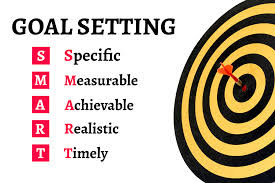If you’re like
many leaders, you’re busy making resolutions this week. I think that’s a great
idea.
Here are ten
ideas to get you started. Sticking to even one of these resolutions in the new
year will make you a better leader, but you might be surprised at how valuable
they'll be outside the workplace.
1. Embrace Accountability
Accountability
is an oft-misunderstood concept. The most common misconception is that
accountability is a negative factor that people must be held to. However, in
its truest form, accountability is a healthy force that should be embraced.
Make this the
year of embracing accountability and better leadership by giving your team the
autonomy they need to approach problems in a way that they feel they can take
genuine ownership over them. Watch them transition into happily accepting
accountability for their responsibilities, and leave the managerial pressure
back in the past. Reframe accountability in your workplace to be a powerful and
positive force.
2. Build Trust
Trust is
absolutely vital to the success of any relationship, and it's a two-way street.
You need to know you can trust your employees to do their best every day, and
they need to trust the decisions you make are in the best interest of the team.
In order to
give employees the autonomy they require to truly embrace accountability, you
have to trust them. Before your team can truly dedicate themselves and be fully
engaged, they need to trust you.
3. Be a Better
Communicator
A good leader
needs to express themselves clearly. Without establishing healthy communication
with your team, you will never be able to achieve your most ambitious goals.
Think of it this way; you can’t possibly express yourself and listen at the
same time. You need to be a good listener to become a facilitator and vice
versa.
Be completely
present when you are engaging in conversation with others. Don’t let technology
or other people distract you — make eye contact, put down any phones or other
objects, and give that person your full attention. Give them time to speak, and
take the time to reflect on what has been said and thoughtfully provide a
response.
4. Break Down
Barriers
All kinds of
barriers exist in the workplace. Physical barriers like walls and distance
combine with less physical, but still very real barriers like time, hierarchy,
technology, communication, and culture. This can be the year of the
sledgehammer—breaking down barriers wherever they stand, and becoming a better
leader because of it.
5. Develop Employees
Most people
want to learn and grow their skills at work. Encourage experimentation and
taking reasonable risk to develop employee skills. Get to know them personally.
Ask what motivates them. Ask what career objectives they have and are aiming to
achieve. You can make their career. In order to get the most from your
employees, you need to invest time and resources in their development. Annual
performance reviews simply aren’t enough. Make a point to sit down with each
employee on a monthly basis (or more frequently, if possible) and provide them
with specific feedback and areas of improvement.
6. Be a More
Strategic Leader
If you’re like
many other managers and executives, you struggle to balance short- and
long-term priorities, and need to be able to move strategies past the
goal-setting stage and into the transformational stage.
Whether or not
you feel strongly about New Year’s Resolutions, a brand new year is an
excellent time to evaluate your current leadership style and identify
opportunities to enhance your skills.
7. Get Comfortable
With Your Discomfort
If you really
want to lead and create impact, you're going to have to get comfortable with
your discomfort — comfortable with confronting the things you may not want to
address head on, comfortable saying "no" to things that don't line
up, and comfortable with saying "yes" to things that do but that
stretch you. Your comfort with discomfort is proportional to how far you can
lead.
8. Spend
Less Time In Meetings
Meetings are
often the enemy of your real work. The reason you work evenings and weekends is
because you didn’t get your work done during the day, in great likelihood
because you were in meetings.
Time is
precious and let’s face it, literally no one wants to spend any more time than
is necessary in a video call anymore. Team meetings are necessary to keep work
on track, give quick feedback and guidance, answer questions, and overall
ensure your team is working systematically toward its deadlines – but they need
to be both efficient and have meaning for your team members.
9. Try
Something New
Speaking of
growth and improvement, this is the perfect time to step out of your comfort
zone and try something new. But not just something new, something you're a bit
afraid to do.
Find that one
thing you've been avoiding and tackle it—don't give up until you walk away
victorious. It can, but doesn't have to be work-related—the confidence you gain
will translate either way. Whatever it is, go do it, then find the next
challenge.
10. Celebrate
and Reward Improvements
New Year's
resolutions are all about celebrating and facilitating growth, whether that's
personal, professional, or otherwise. It's
important to take time to reward and recognize even small, but positive steps
forward. After all, those small steps are what add up to impact.
Naturally, your
resolution may focus on areas that lack progress, but don’t forget to savor the
progress made, and find some small way to celebrate.
Whether or not
you feel strongly about New Year’s Resolutions, a brand new year is an
excellent time to evaluate your current leadership style and identify
opportunities to enhance your skills.














